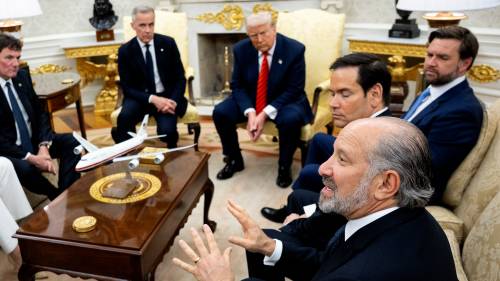The long shadow of Trump-era trade policies appears poised to extend well into the future, as U.S. Commerce Secretary Gina Raimondo delivered concerning signals for Canadian businesses and consumers alike. During a recent Senate hearing, Raimondo indicated that tariffs imposed on Canadian aluminum and steel during the previous administration may remain firmly in place, challenging assumptions that these measures would be temporary disruptions to North American trade relations.
“These tariffs have proven effective tools for protecting American workers and industries,” Raimondo stated during questioning from the Senate Finance Committee. “While we value our relationship with Canada, we must ensure our trade policies prioritize American economic interests first.”
The controversial tariffs, initially implemented in 2018 under Section 232 of the Trade Expansion Act citing “national security concerns,” have been a persistent source of tension between the historically aligned trading partners. Despite hopes following the Biden administration’s initial commitment to rebuild international alliances, this latest position suggests a continuing bipartisan embrace of protectionist trade policies.
Canadian officials have consistently argued these tariffs are unjustified, pointing to deeply integrated supply chains that benefit both nations. Trade Minister Mary Ng responded swiftly to Raimondo’s comments, emphasizing that “Canada has always been America’s most reliable supplier of aluminum and steel, crucial for U.S. national security and manufacturing capabilities.”
Economic analysis from the CO24 Business desk indicates these measures have increased costs for manufacturers on both sides of the border. A recent study by the C.D. Howe Institute estimated the tariffs have cost Canadian producers approximately $3.2 billion annually while simultaneously raising prices for American consumers by an average of 7-10% on affected goods.
The implications extend beyond immediate economic impacts. Trade policy experts interviewed by CO24 World News suggest this position signals deeper shifts in American trade philosophy that transcend party lines.
“What we’re witnessing is the consolidation of a new Washington consensus on trade,” explains Dr. Eleanor Sanchez, international economics professor at the University of Toronto. “The era of reflexive free trade advocacy has given way to strategic economic nationalism that’s unlikely to reverse regardless of who occupies the White House.”
For Canadian industries, particularly in manufacturing hubs across Ontario and Quebec, the prospect of permanent tariffs requires strategic recalibration. Several major steel and aluminum producers have already begun diversifying export markets, with particular focus on European and Asian opportunities.
The Canadian government has maintained its retaliatory tariffs on approximately $3.6 billion in American imports, creating a precarious balance that neither fully resolves the dispute nor allows it to escalate further. Sources within Canadian politics circles suggest Ottawa is preparing contingency plans should the situation deteriorate following the upcoming U.S. presidential election.
Beyond the immediate economic calculations lies a more profound question about the future of North American economic integration. The USMCA (United States-Mexico-Canada Agreement), while representing a modernized trade framework, has failed to prevent unilateral trade actions that undermine its cooperative spirit.
As businesses on both sides of the border navigate this uncertain landscape, consumers ultimately bear the costs of these ongoing trade frictions. With inflation concerns already straining household budgets, the added premium on goods affected by these tariff actions only compounds economic pressures.
The coming months will prove critical in determining whether pragmatic cooperation can prevail over protectionist impulses. As commerce secretary Raimondo noted in her concluding remarks, “We remain open to discussions with our Canadian partners, but any resolution must address legitimate American concerns about market conditions.”
The question remaining for both nations is whether their centuries-old economic partnership can evolve to meet current challenges, or if we’re witnessing the beginning of a more fundamental and permanent divergence in how North America conducts its internal trade. What price are citizens on both sides of the border willing to pay for policies that may protect specific industries while raising costs throughout the broader economy?

























